While talking about horror as a genre in culture, it is sometimes easy and convenient to overlook its abundance in art. In truth, the world of horror borrows heavily from it, and no example of this is more appropriate than the Black Paintings, a series of paintings by expressionist artist Francisco Goya executed in the early 19th century that are so horrifying that many people cannot even bear to look at them.
These 14 paintings, created in his late life when his hearing had deserted him and his mind rendered half-mad by a generative disease (thought to be some kind of encephalitis), represent the horrific depths of evil and terror that can very much manifest in humanity.
Goya probably tried to keep the nightmarish visions in his mind at bay by purging himself of them through painting them out. These dark and strange works of Goya’s Black Paintings are not only momentous in the history of art, but also in the history of horror.
A Background to Goya’s Black Paintings
It was a particularly dark time in the life of Francisco Goya, with the effects of political turmoil and mystery illnesses that tormented his mind and robbed him of his hearing. He bought a house in 1819 in Madrid, at 72 years of age, called the Quinta del Sordo or the “Deaf Man’s Villa”.
Over the next few years, without telling anyone or assigning any titles to them, he drew 14 paintings on to his walls as murals. These, the infamous “Black Paintings”, were later recreated on canvas and currently reside in the Museo del Prado in Madrid.
Goya’s Black Paintings are altogether frightful and horrifying, depicting demonic figures with nightmarish expressions. They have heavy black and brown overtones, very different from the brightly colored palette of his earlier work.
From the Spanish civil war to more indirect, esoteric references to the human condition, these paintings are horrific while also being complex and nuanced. In a way, they are also the opus of a brilliant artist during the most trying years of his life.
Let us take a look at the chilling themes of the paintings.
Atropos
This depicts three dark, mythical gods, each holding a mirror, a demon, and a pair of scissors. Nearby, there is a bound figure resigned to its fate.
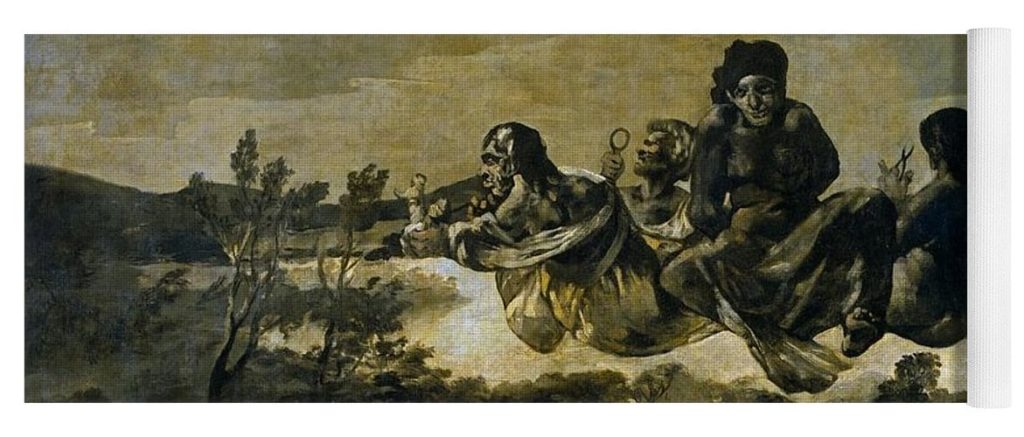
Two Old Men
A depiction of two old men wearing the clothes of friars. One, with a human appearance, stands hunched over on his cane while the other, with the face of a demon, whispers in his ear.
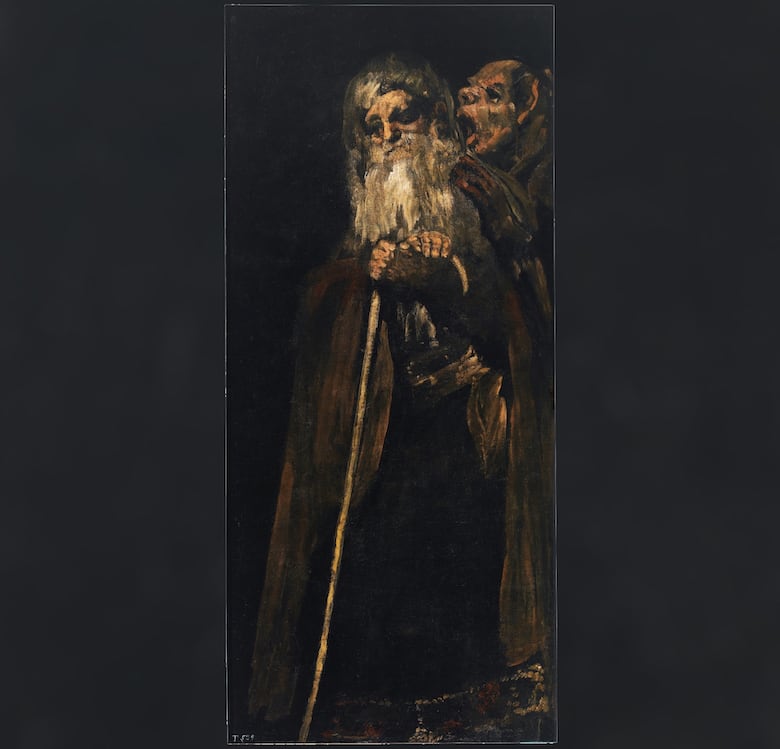
Two Old Men Eating Soup
This shows two old men, their faces like toothless skulls, sitting bent over while consuming bowls of soup.
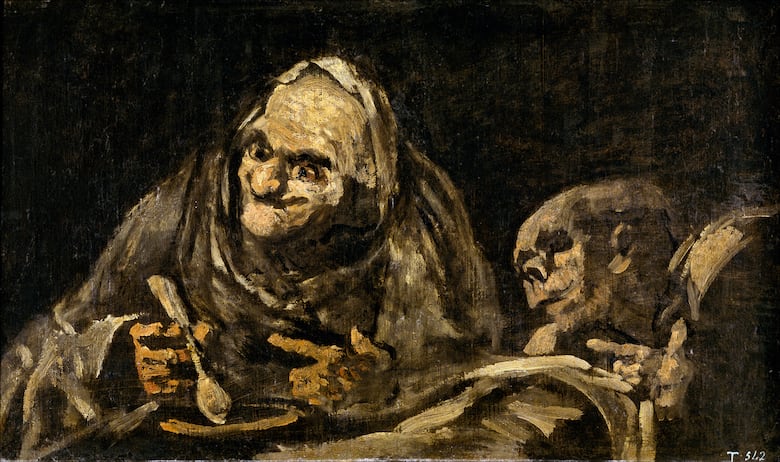
Fight with Cudgels
Two peasants, with their feet stuck in quagmire, try to hit each other with clubs as they sink further in.
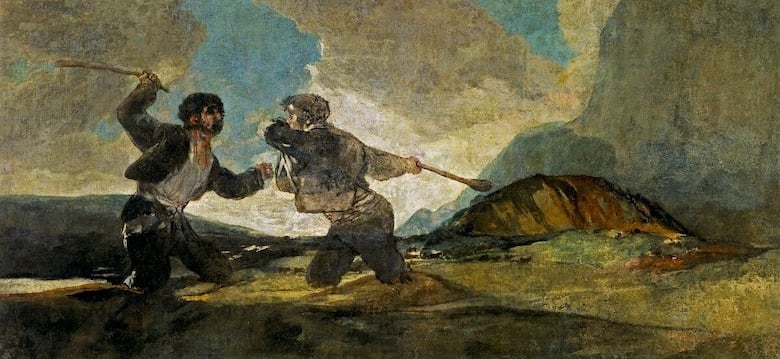
Witches’ Sabbath
A group of terrified witches sit in a circle as Satan, with a head of a goat, towers over them. At a distance, a solitary young girl is sitting quietly. There is a palpable feeling of fear and anxiety which seems to mirror Goya’s own self-doubt.
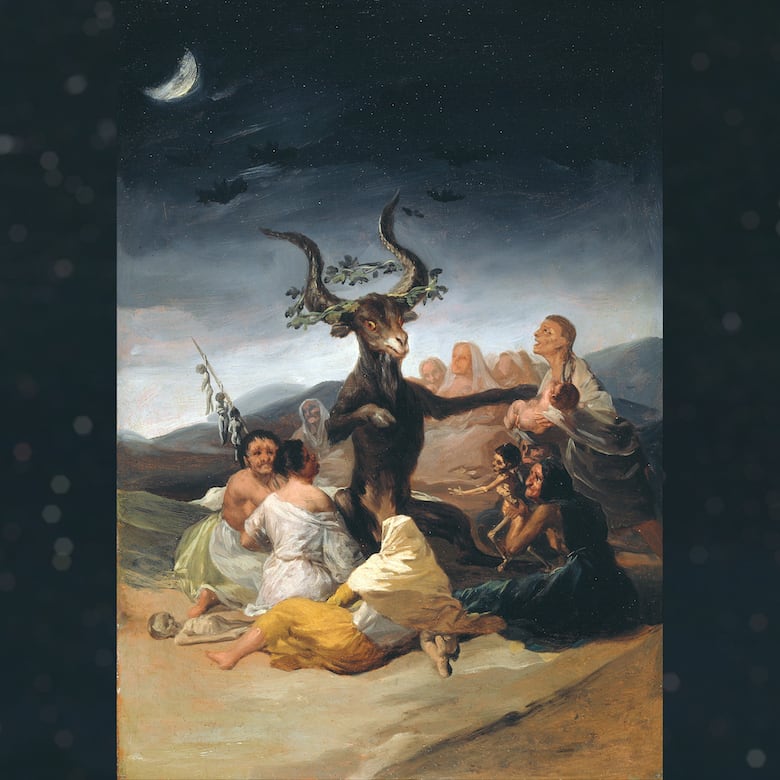
Men Reading
A group of men, with horribly disfigured faces, sit together reading a document. One of the men looks upwards, with hopelessness and despair in his face.
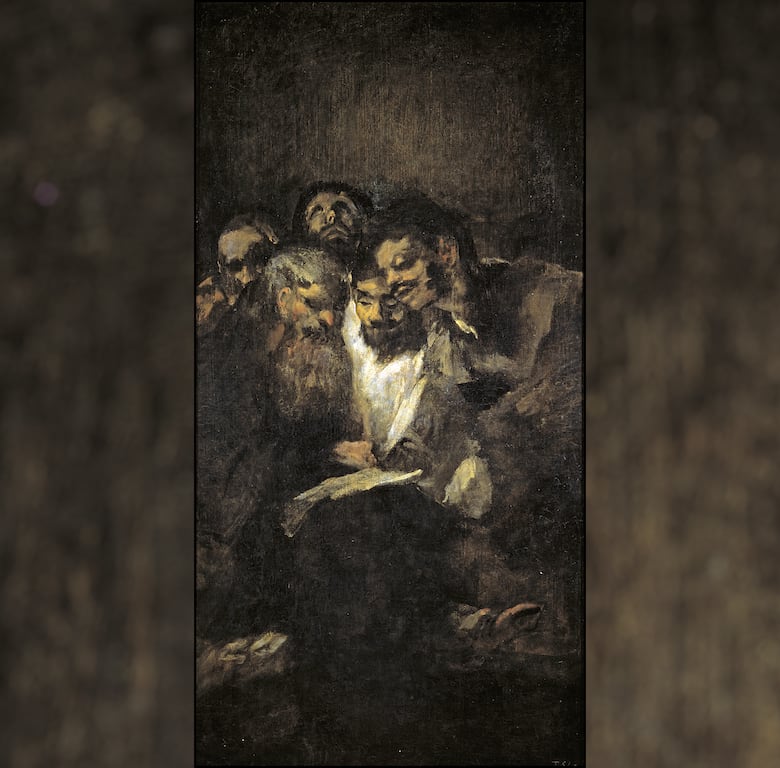
Judith and Holofernes
Goya interprets a scene from the “Book of Judith”. In the book, Judith becomes a savior for her people by seducing the enemy general Holofernes and ultimately beheading him. Here, we see Judith with horrific facial features standing in darkness and holding a weapon. A dark, disembodied hand seems to be reaching up to her.
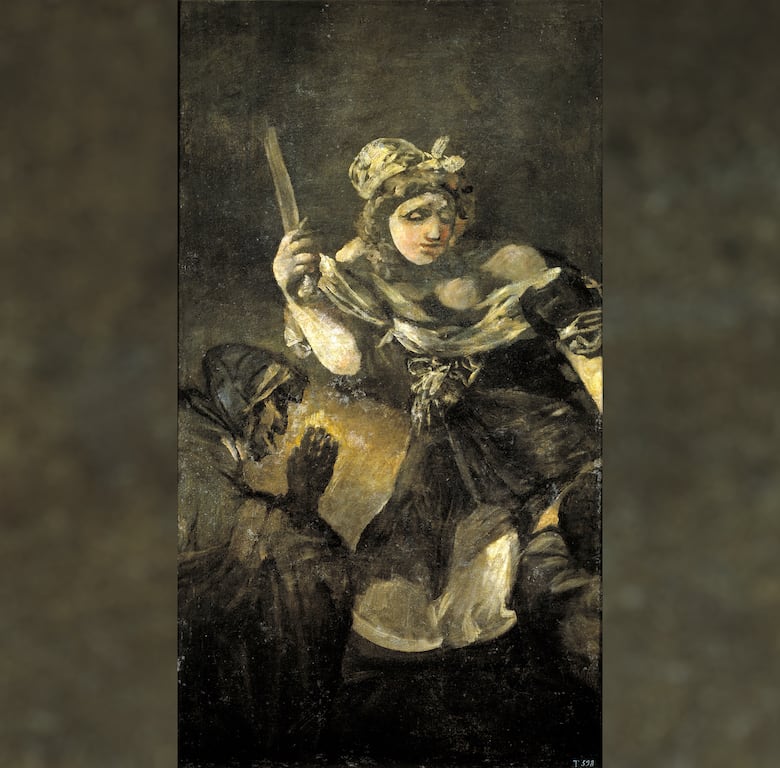
A Pilgrimage to San Isidro
Inside a dark, morose landscape, we see a group of pilgrims. They include villagers, men with top hats, and nuns, all with distorted facial expressions. Seemingly, the group is singing a song of despair.

Men Mocked by Two Women
While a man sits and masturbates, two women with disturbing facial features sit and seem to mock and jeer at him.
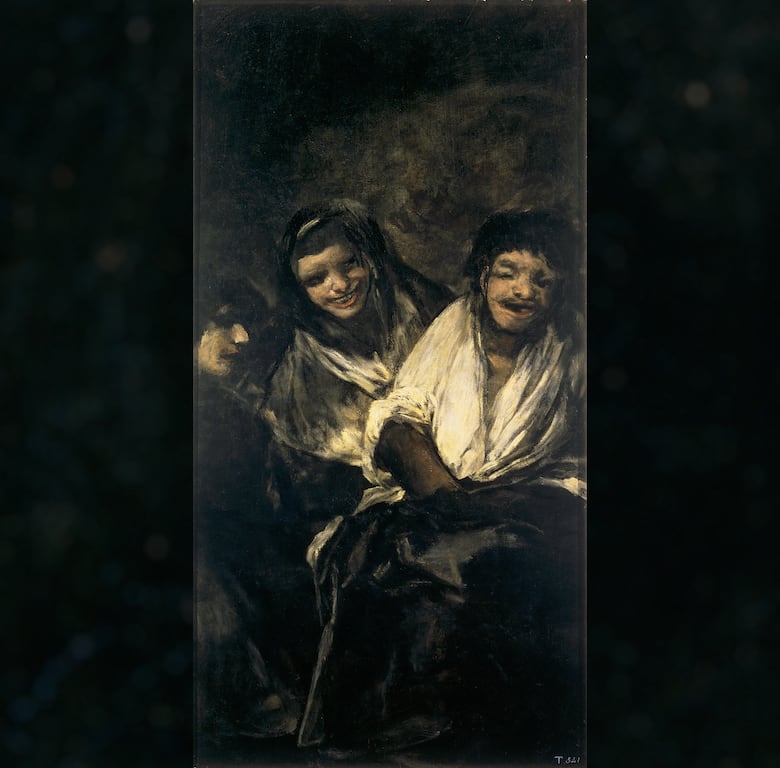
Procession of the Holy Office
This depicts a procession traversing a tricky path in the mountains. It includes mostly women in white scarves, hunched over and dreary. In spite of a bright sky, the figures are drowned in darkness.
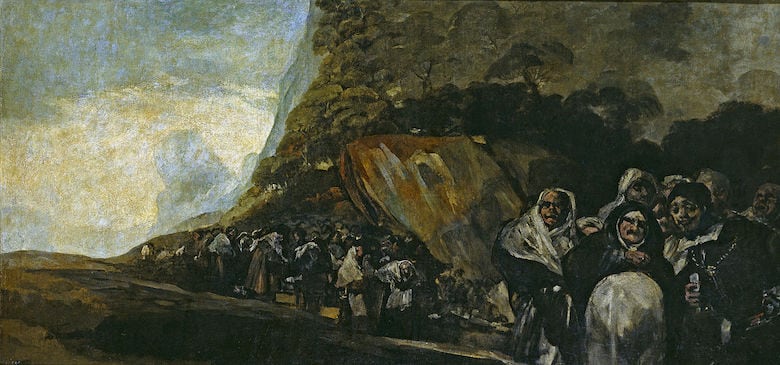
The Dog
This shows a head of a dog sticking out from behind a mound of soil. The dog has a forlorn look at is almost lost, on account of being extremely small in scale in a large, bleak canvas.
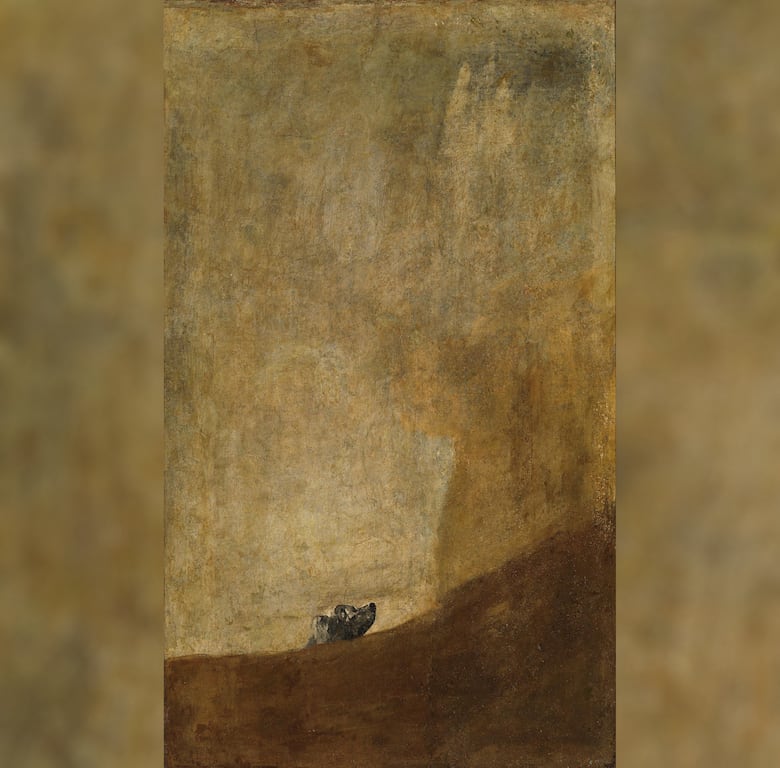
Saturn Devouring his Son
Perhaps the most famous of the 14, this depicts the Greek god Saturn, who is eating his own son in fear that he might one day grow up to topple him from power. While ancient tales tell of him swallowing his sons whole, in this picture he is biting of parts from a bloody body with horribly bulging eyes. This image inspires several characters in popular culture, including the underground creatures in The Descent and the Pale Man in Pan’s Labyrinth.
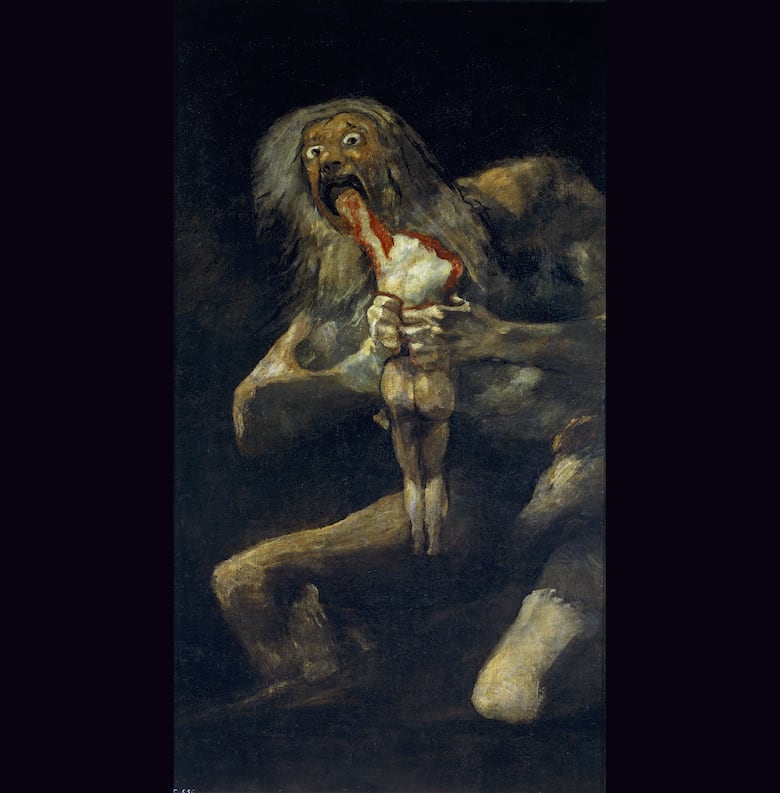
La Leocadia
This shows Leocadia Weiss, Goya’s maid and probably his mistress as well, leaning against a mantelpiece with a dejected, forlorn expression.
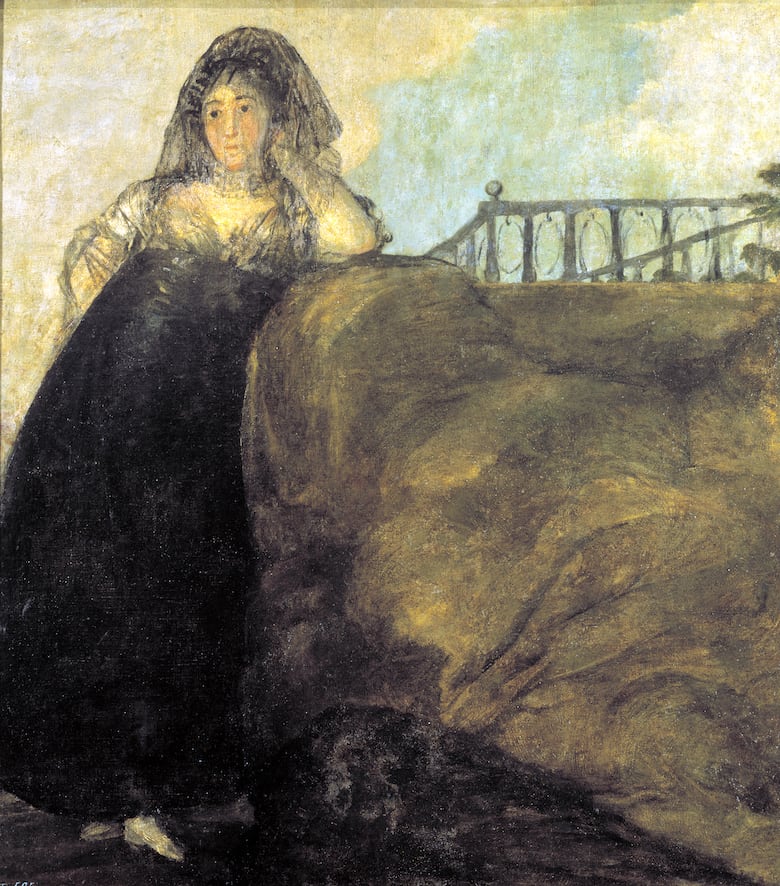
Fantastic Vision
Two huge figures, one in red clothing, hover over a group of small people and horses beneath a mountain with a large fortress on its zenith. At the bottom right of the frame, we see a pair of hands aiming a gun at the floating figures.
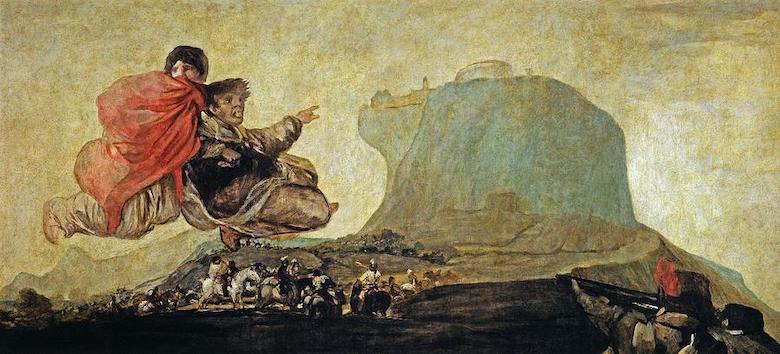
These paintings inspired many future generations of artists, blurring the line between Expressionism and Surrealism while also becoming a harbinger for the horror genre with its combination of bleak, horrific visuals, and the resultant feeling of darkness and doom.
Last Updated on September 3, 2021.

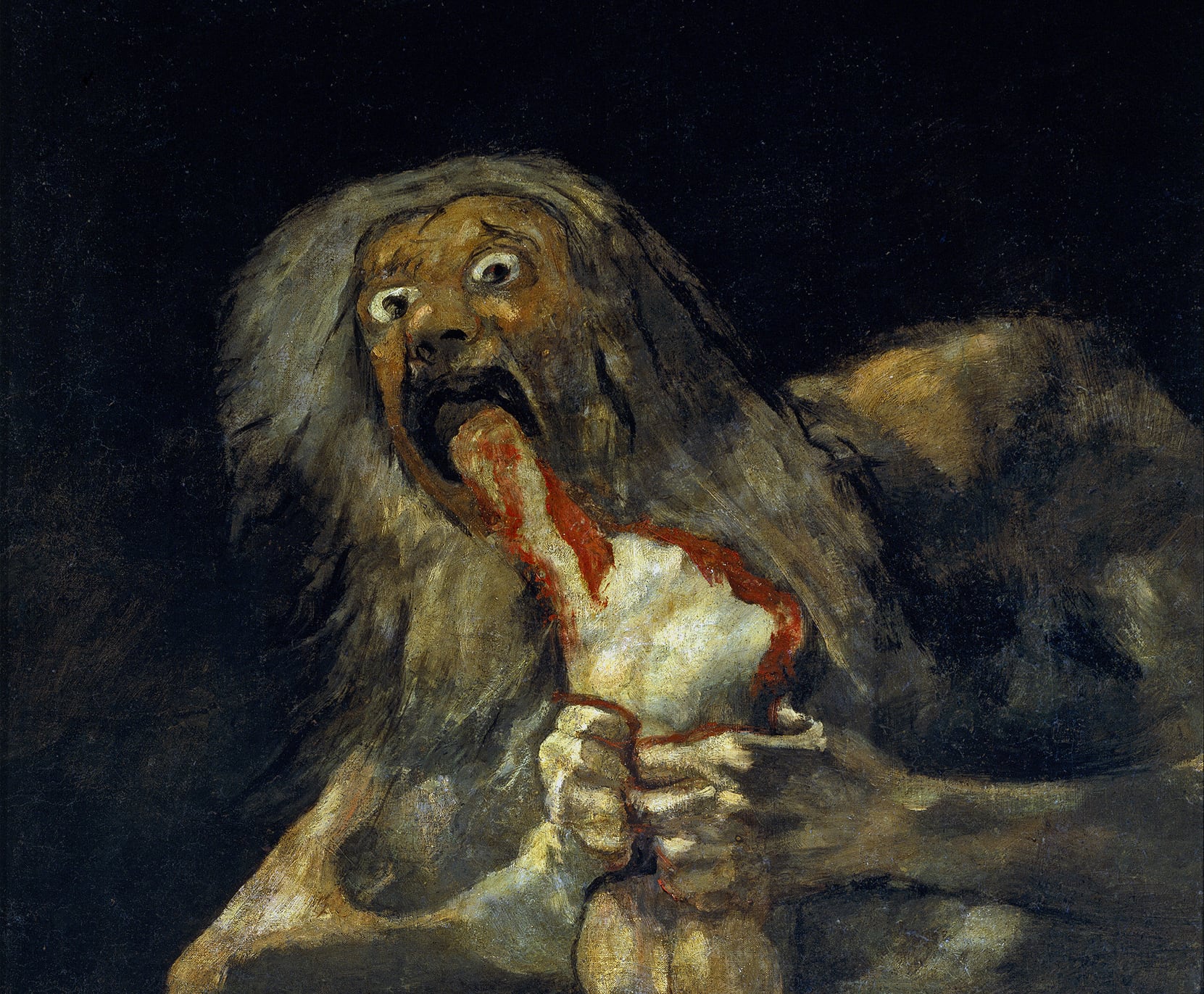
1 Comment